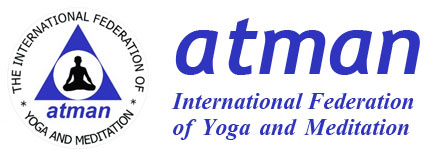Ayurveda is a very practical system to protect and restore health. Its methods are accessible and easy to apply and also inexpensive. Ayurveda also contains objective knowledge that only direct experience can reveal.
Practical ayurvedic methods are non-traumatic, non-invasive, and do not interfere with other forms of treatment. They can intensify the effect of almost any form of healing and can therefore be administered without any problems or secondary effects in combination with other conventional treatments. From this point of view, it is good to know that Ayurveda has:
- Ayurvedic procedures for those who have a relatively normal state of health (who don’t suffer from any serious complaints). These procedures have the role of both protecting the human being who applies them (by not allowing any illness to appear), as well as that of helping her to become more and more harmonious.
- Ayurvedic procedures for those who already have certain complaints. These procedures are designed, first of all, to eliminate that (or those) illness(es). In order to apply these kinds of ayurvedic procedures, a profound knowledge of Ayurveda is required.
As is known, any medical science has two objectives: the first is to prevent diseases (including to promote health), and the second is to treat them, in order to cure them, once they have already appeared. Out of these two, the first one is always better and to be preferred, as it is wiser to stay out of the mud, instead of having to wash it off afterwards.
Unfortunately, in many people’s view, as well as in practice, modern medicine is the science that heals diseases. In many people’s view, if you are not completely ill, you don’t have to see a doctor. In this way we can see that people nowadays have lost the notion of a healthy life style. Most of us live “at random”, and, when an illness appears (because our body does not function “at random”, but it always follows very precise rules), it is seen as an unjust strike of destiny or as bad luck and never as the result of the mistakes we did.
Besides all this, in the past, a practitioner of the ayurvedic system was considered a real ayurvedic practitioner only when those that he was taking care of did not become ill. The one who wishes to apply ayurvedic knowledge will start by knowing what preventive methods need to be used in order to never become ill. Still, if any affliction tends to appear, it can be “caught” in time, when it has not yet become stable at the physical level. All preventive procedures destined to maintain health and to prevent illnesses are included in Ayurveda in the branch called SVASTHAVRITTA.
In Ayurveda there are a series of healing methods, often used to prevent, and which are applied differently, according to the constitutional type. The main groups of practical methods in Ayurveda are:
- The wise usage of medical plants (phytotherapy);
- Healthy eating, according to the constitution (dietotherapy);
- Therapeutic use of colours and cloths (chromotherapy);
- The healing use of crystals (crystal therapy);
- The healing power of sound (sound therapy);
- The use of natural beneficial aromas (aromatherapy);
- The simple and accessible methods of body purification (pancha- Karma);
- Ayurvedic traditional massage (abhyanga);
- The healing power of psychic and mind (psycho therapy);
- The knowledge of Astral subtle influences (ayurvedic astrology);
- The practice of yoga procedures (hatha yoga);
- Profound meditation and prayer (dharana);
- Improvement and beneficial adaptation of the life style.
